Common Cuckoo Bird
- December 8, 2023
- 0 comment
Common cuckoo, also known as Cuculus canorus, are medium-sized, unmistakable birds with striking plumage. They are found throughout Europe, Asia, and North Africa, and are known for their distinctive “Cuculus canorus” call. Common cuckoos have long, slender bodies, with long, pointed wings and a short tail. They are mostly gray-green, with a paler underside and a distinctive white patch on the rump. The male has a chestnut-brown streak on the side of its head, while the female has a white patch on the nape of its neck.
Physical Appearance
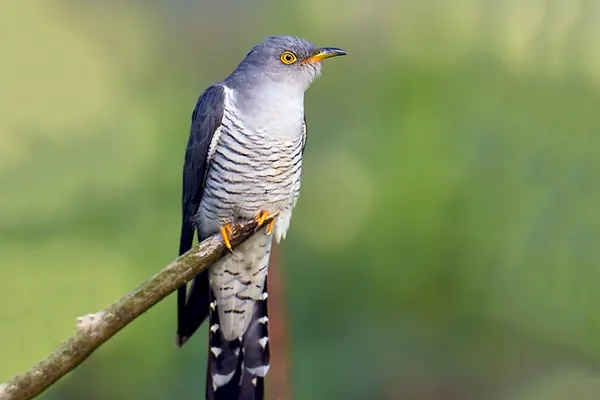
Common Cuckoos
- Lifespan: 2 to 3 years
- Habitat: Woodlands, Grasslands, Marshes, and Heathlands
- Diet: Primarily consists of insects, especially caterpillars
- Size: 32-34 cm
- Weight: 80 to 130 grams
- Wingspan: 55 to 60 cm
- Conservation Status: Least Concern
- Population Trend: generally stable. However, specific populations in certain regions may face local challenges due to habitat loss, climate change, or other factors.
One of the most intriguing aspects of the Common Cuckoo is its reproductive strategy. Unlike most birds, the cuckoo doesn’t build its own nest or raise its own young. Instead, it lays its eggs in the nests of other bird species, a behavior known as brood parasitism. The unsuspecting host bird then incubates and cares for the cuckoo’s eggs, often at the expense of its offspring.
Species Type
Common cuckoos are obligate brood parasites, meaning that they lay their eggs in the nests of other bird species. They are opportunistic brood parasites, meaning that they will lay their eggs in the nests of a variety of host species. The most common host species for common cuckoos are dunnocks, warblers, and thrushes.
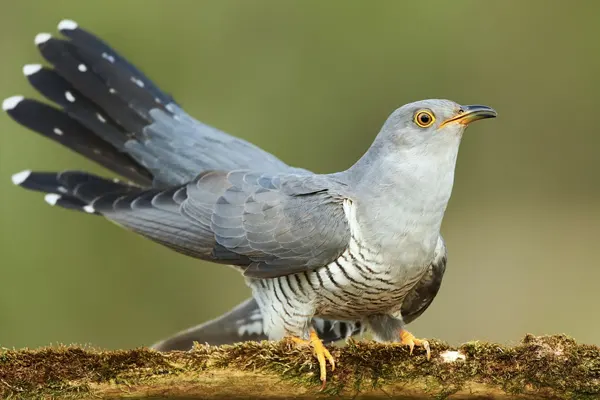

The Common Cuckoo is a bird of intrigue, marked by its unique appearance, unmistakable call, and extraordinary reproductive tactics. Its presence in various cultural traditions and the natural world makes it a captivating subject of study and admiration.
Feather Coloration
Male Common Cuckoo
- Upperparts: Adult males typically have bluish-gray or slate-colored feathers on their upperparts. This gives them a subtle and elegant appearance, contributing to their overall sleek profile.
- Underparts: The underparts of males are characterized by a barred pattern, with a mix of white and gray-brown bars on the chest and belly. These bars provide camouflage and help the male blend into its surroundings.
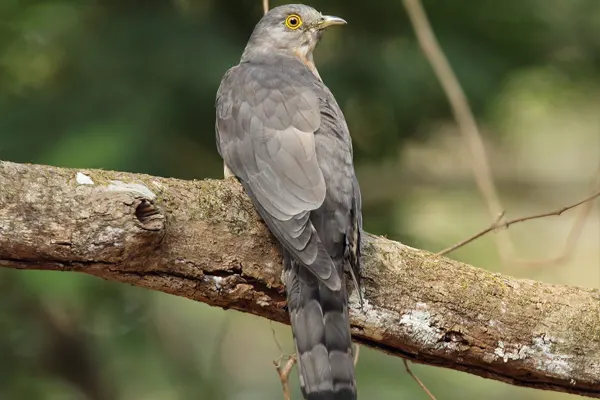

Female Common Cuckoo
- Upperparts: Adult females have a more reddish-brown hue on their upperparts, creating a warmer and earthier coloration compared to males.
- Underparts: Similar to males, females also exhibit a barred pattern on their underparts. The bars are typically a mix of white and brown, creating a mottled appearance on the chest and belly.
Flight Characteristics
One of the most recognizable aspects of the Common Cuckoo’s flight is its undulating pattern. During flight, the bird moves in a rhythmic, wave-like manner, where the wings are alternately raised and lowered. This undulating flight contributes to the bird’s gracefulness in the air.
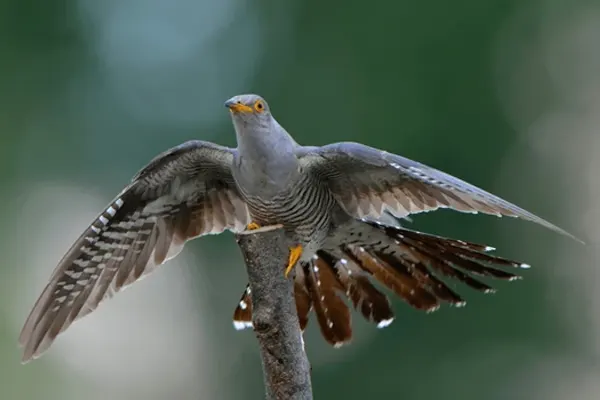
- Swift and Agile: Common Cuckoos are swift and agile fliers. Their pointed wings and long tails facilitate rapid and precise aerial movements. This agility is particularly important during their long-distance migration, where they cover substantial distances with efficiency.
- Long-Distance Migration: Common Cuckoos are known for their impressive migratory journeys. They undertake long-distance flights between their breeding grounds in Europe and Asia to their wintering grounds in sub-Saharan Africa. The efficiency and endurance of their flight contribute to the success of these extensive migrations.
- Silent Flight: While in flight, Common Cuckoos are generally silent. Unlike some birds that produce conspicuous vocalizations during flight, cuckoos tend to save their distinctive “cu-coo” calls for perched or stationary moments. The silent flight allows them to move through the air with minimal acoustic signals, which can be advantageous in avoiding potential predators.
- Mating Displays: During courtship displays, Common Cuckoos may engage in acrobatic flights. Males, in particular, might perform aerial displays to attract females. These displays can include swooping, circling, and other maneuvers that showcase the male’s agility and fitness.
Migration Patterns
Common Cuckoos are known for their highly seasonal migration. They are neotropical migrants, meaning they travel between breeding and non-breeding areas that are often located on different continents. Their migration is prompted by the changing seasons.
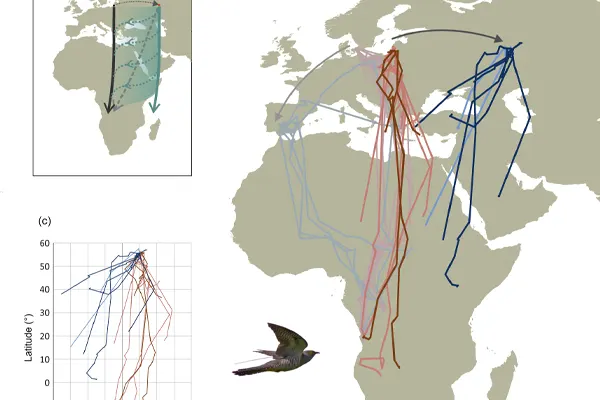
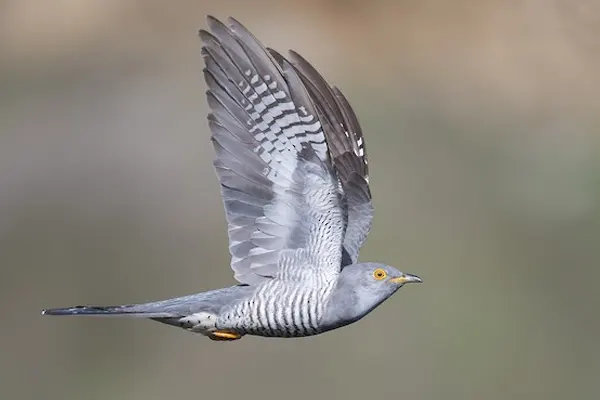
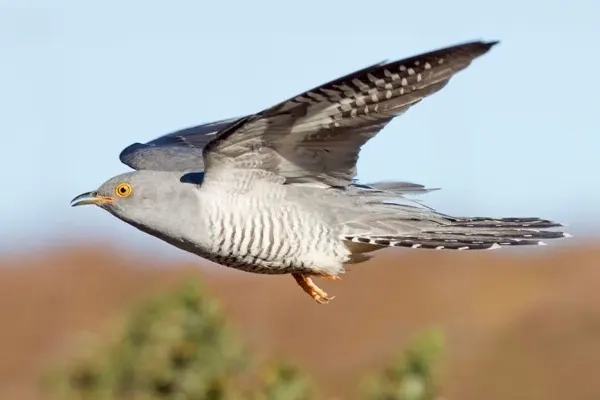
Common cuckoos are long-distance migratory birds that spend their summers in Europe and Asia and their winters in Africa. They migrate in stages, making several stops along the way to refuel and rest.
- Spring Migration: Common cuckoos begin their spring migration from Africa in late March or early April. They fly north through the Middle East and Turkey, arriving in their breeding grounds in Europe and Asia in May or June.
- Autumn Migration: Common cuckoos begin their autumn migration from Europe and Asia in late August or early September. They fly south through the Middle East and Turkey, arriving in Africa in October or November.
Habitat & Distribution
Common Cuckoos inhabit a variety of breeding habitats. They are commonly found in open woodlands, heathlands, grasslands, and areas with a mix of trees and shrubs. They are also known to occupy marshes and wetlands. The key requirement for their breeding habitat is the presence of suitable host species, as Common Cuckoos are brood parasites, laying their eggs in the nests of other birds. During the non-breeding season, Common Cuckoos migrate to sub-Saharan Africa. Their wintering habitat includes a range of environments such as savannas, grasslands, and wooded areas. The wintering grounds provide a warmer climate and a consistent food supply during the European and Asian winter months.

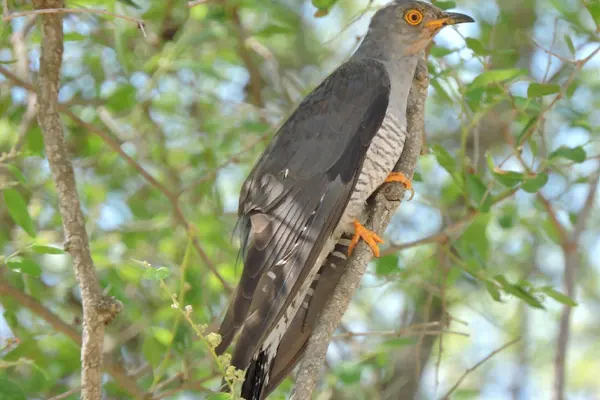
- Breeding Range: In the breeding season, Common Cuckoos are found in various regions of Europe and Asia, including the British Isles, Scandinavia, Central Europe, Russia, and parts of Asia such as Siberia. The specific distribution can vary based on the availability of suitable breeding habitats and host species.
- Migration Routes: Common Cuckoos undertake extensive migrations between their breeding and wintering grounds. Their migration routes often take them across Europe, through the Middle East, and into sub-Saharan Africa. The exact routes may vary among individuals, but the overall pattern involves crossing continents.
- Wintering Range: The wintering range of Common Cuckoos includes sub-Saharan Africa, with some individuals traveling to regions like Central and West Africa. The wintering grounds provide a crucial environment for the birds to find food resources and avoid the harsh conditions of their breeding areas during the winter.
- Adaptability: One notable aspect of the Common Cuckoo’s distribution is its adaptability to a range of habitats. This adaptability allows the species to thrive in diverse landscapes, contributing to its widespread presence across a variety of ecosystems.
Behavioral Traits
One of the most distinctive behaviors of Common Cuckoos is their reproductive strategy known as brood parasitism. Females lay their eggs in the nests of other bird species, often targeting smaller songbirds. The host birds then unwittingly raise the cuckoo chicks alongside or instead of their own offspring. Common Cuckoos are known for their remarkable egg mimicry. The eggs laid by cuckoos closely resemble those of their host species. This mimicry helps the cuckoo eggs go unnoticed among the host’s own eggs, increasing the chances of successful parasitism.
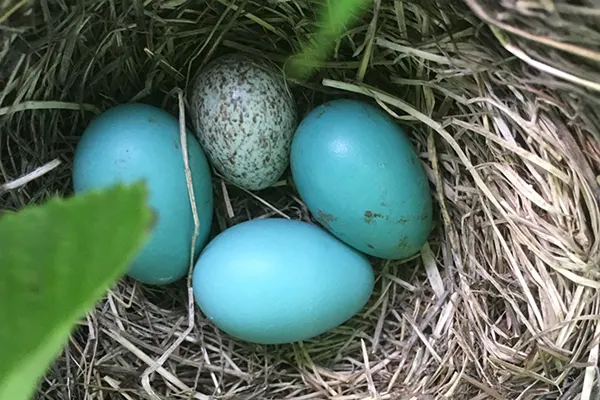
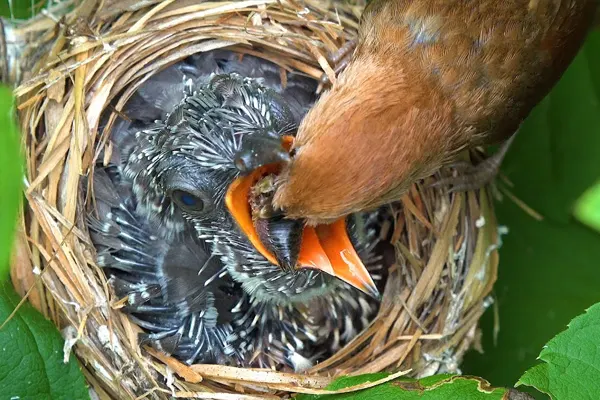
The behavioral traits of the Common Cuckoo are a fascinating blend of reproductive strategies, vocal communication, migratory adaptations, and territorial behaviors. These traits contribute to the bird’s success in a variety of habitats and make it a subject of interest for researchers and bird enthusiasts alike.
Role in Ecosystem
The presence of Common Cuckoos and their parasitism can act as a selective pressure on host species. Hosts that successfully recognize and reject cuckoo eggs contribute to their reproductive success. This interaction can lead to the evolution of anti-parasitic behaviors and mechanisms in host populations.

- Caterpillar Population Control: Common Cuckoos primarily feed on caterpillars, especially those of hairy moth species. Their foraging behavior can help control the population of these caterpillars, which are often considered pests due to their potential to defoliate plants. As such, cuckoos play a role in regulating insect populations, contributing to the balance of the ecosystem.
- Seed Dispersal: Like many birds, Common Cuckoos contribute to seed dispersal as they consume fruits and insects in various habitats. Seeds are dispersed through their droppings, aiding in the establishment and genetic diversity of plant species.
Dietary Habits
The primary component of the Common Cuckoo’s diet consists of insects, with a particular emphasis on caterpillars. They have a specialized adaptation to feed on hairy caterpillars, which are avoided by many other bird species due to their indigestible hairs.

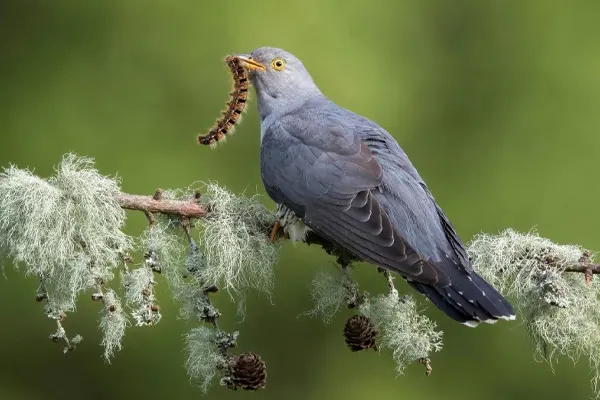
The ability of Common Cuckoos to feed on hairy caterpillars is noteworthy. Many birds avoid these caterpillars due to their indigestible hairs, which can be harmful to their digestive systems. Common Cuckoos, however, have adaptations in their digestive tract that allow them to consume and process these caterpillars without harm.
Interesting Facts
Common Cuckoos are renowned for their unique reproductive strategy of brood parasitism. Females lay their eggs in the nests of other bird species, letting them raise the cuckoo chicks as their own. The cuckoo chicks often outcompete the host chicks, emphasizing the mastery of this deceptive tactic.
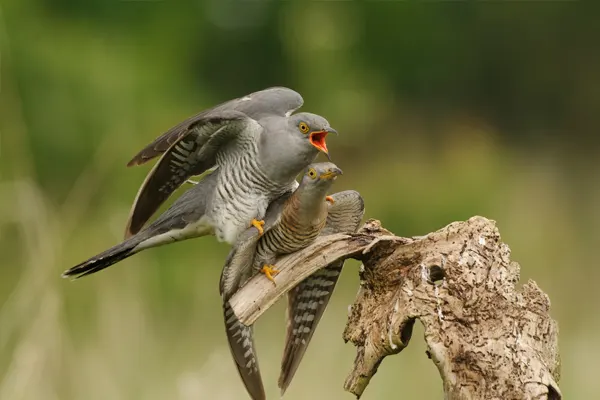
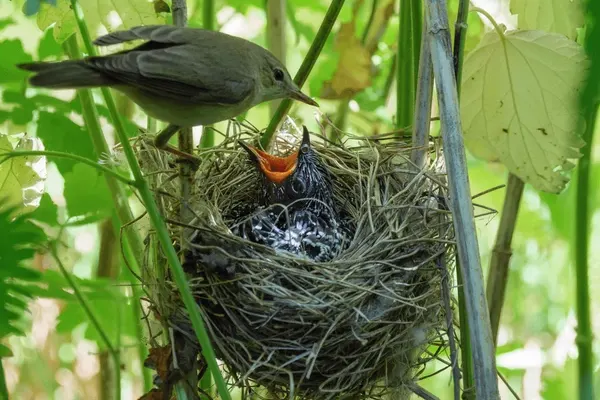
- Vocal Clockwork: The male Common Cuckoo is known for its iconic two-note call, often described as “cu-coo.” This distinctive vocalization is not only a sign of spring but also serves as a kind of “acoustic clock.” The timing of the cuckoo’s call has cultural significance and is associated with seasonal changes in various regions.
- Unique Call Variations: Each male Common Cuckoo has its own slightly different variation of the classic “cu-coo” call. This individuality in vocalizations helps in recognizing and distinguishing between different males. It adds a unique dimension to their communication and may play a role in territorial signaling.
- Hitchhiking on Raptors: Common Cuckoos have been observed “hitchhiking” on larger birds of prey during migration. They perch on the backs of these raptors, such as the Eurasian Sparrowhawk, taking advantage of the air currents created by the larger bird’s flight. This behavior helps them conserve energy during the demanding migratory journey.
- Precise Arrival Timing: The timing of Common Cuckoo migration is remarkably precise. They synchronize their arrival at their breeding grounds with the emergence of caterpillars, their primary food source. This adaptation ensures that there is an abundant food supply for their chicks when they start breeding.
Nesting Habits
The nesting habits of the Common Cuckoo are characterized by the absence of nest building and the reliance on the nests of other bird species for reproduction. The intricacies of brood parasitism, including egg mimicry, competition within the host nest, and the subsequent development and migration of the cuckoo chick, are central to their unique reproductive strategy.
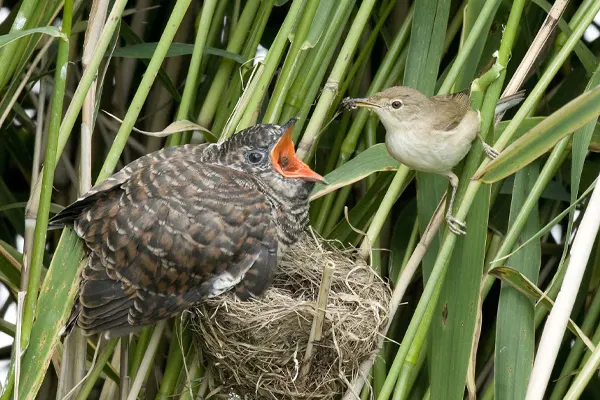

- Host Species Selection: The choice of host species is crucial for the Common Cuckoo’s reproductive success. Common hosts include small songbirds such as pipits, wagtails, and warblers. The cuckoo selects a suitable host nest based on factors such as nest structure, location, and the presence of host eggs.
- Egg Laying and Mimicry: Once the female identifies a suitable host nest, she lays a single egg in it. The cuckoo egg often closely mimics the appearance of the host’s eggs. The mimicry is so precise that it helps the cuckoo egg go unnoticed among the host’s own eggs.
- Ejection of Host Eggs: After laying its egg, the female Common Cuckoo may remove one or more host eggs from the nest. This action reduces the likelihood of the host recognizing the foreign egg and rejecting it. The cuckoo chick, upon hatching, often monopolizes the attention and feeding efforts of the host parents.
- Cuckoo Chick’s Independence: Once the Common Cuckoo chick reaches a certain size and level of independence, it leaves the host nest. At this point, it may join other young cuckoos in communal roosts while honing its flying and foraging skills.
Calls & Vocalizations
The most iconic vocalization of the Common Cuckoo is a two-note call that is often described as “cu-coo.” This call is typically associated with the arrival of spring and is a recognizable sound in many European and Asian landscapes. The “cu-coo” call is significant in marking the changing seasons. The timing of the call is often synchronized with the breeding season, and its onset is considered a sign that spring has arrived. The call is more frequent during the breeding season when males use it for territorial communication and attracting mates.
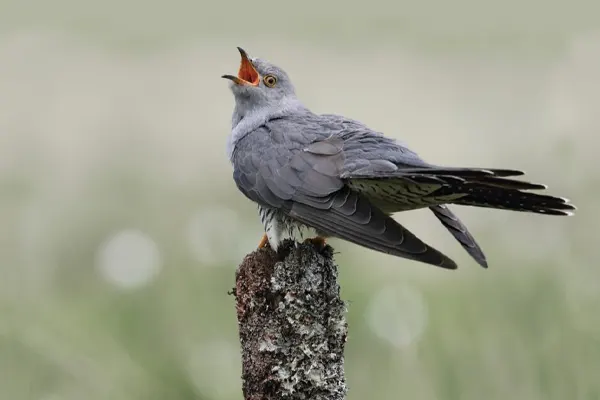
- Female Vocalizations: While the male’s “cu-coo” call is more prominent, females also produce vocalizations. Their calls are often described as a bubbling or gurgling sound. Female vocalizations may serve in communication with males during courtship and mating.
- Migration Calls: During migration, Common Cuckoos are generally silent. They save their distinctive calls for perched or stationary moments, and the migratory flights are often conducted quietly. This silent flight behavior can be advantageous in avoiding potential predators.
- Courtship Calls: Males engage in courtship displays, which may involve a series of calls and other behaviors to attract females. Courtship calls can be more varied and may include softer vocalizations compared to the territorial “cu-coo” calls.
- Communication with Hosts: Common Cuckoos also use specific calls to communicate with their host species during the parasitic phase. These calls may mimic the begging calls of the host chicks, encouraging the host parents to continue feeding the cuckoo chick.
Ecological Significance
The reproductive strategy of brood parasitism employed by Common Cuckoos has an impact on host bird populations. The presence of cuckoos can influence the behavior and evolution of host species, as they develop mechanisms to recognize and reject cuckoo eggs. This interaction contributes to the regulation of host bird populations.
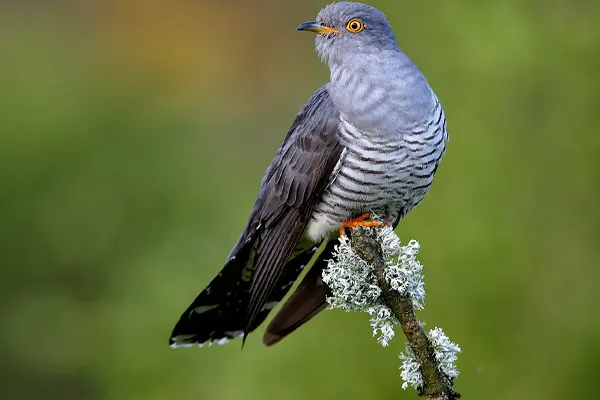
- Indicators of Ecosystem Health: Monitoring Common Cuckoo populations and their migratory patterns can serve as indicators of overall ecosystem health. Changes in their abundance and distribution may reflect broader environmental changes, such as alterations in climate, habitat quality, or the availability of food resources.
- Contribution to Biodiversity: The Common Cuckoo contributes to avian biodiversity through its interactions with host species and its presence in various habitats. While its reproductive strategy can have localized impacts on specific host populations, the cuckoo’s adaptability and broad distribution contribute to overall avian diversity.
- Contribution to Avian Communities: Common Cuckoos are part of avian communities and ecological networks. Their presence influences the dynamics of these communities, including interactions with other bird species, predators, and competitors. Understanding these interactions provides insights into the structure and functioning of avian ecosystems.
- Coevolutionary Dynamics: The relationship between Common Cuckoos and their host species has led to coevolutionary dynamics. Host species evolve mechanisms to recognize and reject cuckoo eggs, while cuckoos evolve strategies to overcome host defenses. This ongoing coevolution contributes to the diversity and adaptability of these species.
Conservation Status
The reasons behind the Common Cuckoo’s current status include its wide distribution, adaptability to various habitats, and relatively stable population trends. These birds are found across Europe and Asia, utilizing diverse ecosystems during different phases of their life cycle, from breeding grounds to wintering areas in sub-Saharan Africa.
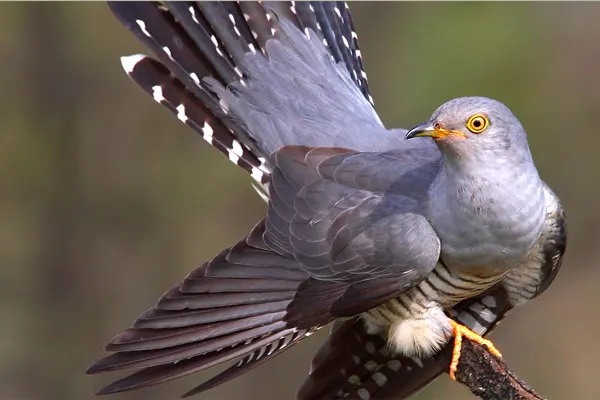
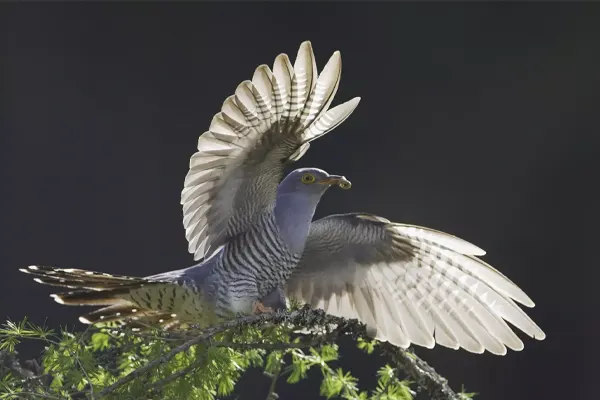
Conservation efforts for the Common Cuckoo often involve monitoring its populations, studying its ecological interactions, and addressing broader issues related to habitat conservation and sustainable land use. Continued research is important for understanding the species’ dynamics and ensuring effective conservation measures if needed. While the overall population is considered stable, localized threats such as habitat loss, climate change, and changes in land use can impact specific populations. Additionally, the host species targeted by Common Cuckoos for brood parasitism may experience declines or changes in behavior, which could indirectly affect cuckoo populations.
Research and Ongoing Studies
Ongoing research on Common Cuckoos is critical for conservation efforts, providing insights into their biology, behavior, and the ecological processes that shape their populations. It also contributes to the broader understanding of avian ecology and the conservation of migratory bird species.
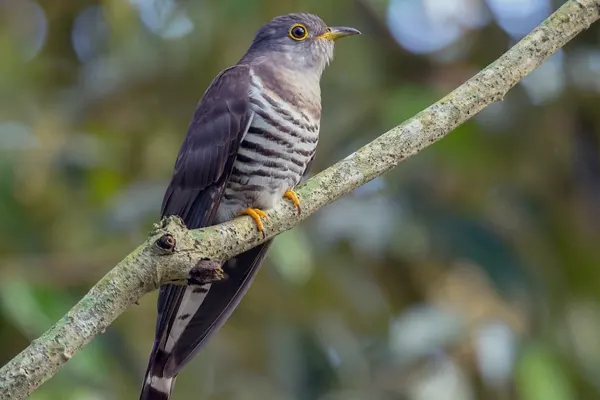
- Host-Parasite Interactions: Studies focus on the interactions between Common Cuckoos and their host species. This includes investigations into host defenses against brood parasitism, the sensory mechanisms host species use to detect cuckoo eggs, and the coevolutionary arms race between cuckoos and their hosts.
- Impacts of Climate Change: Research assesses how climate change may be influencing the distribution, timing of migration, and breeding success of Common Cuckoos. Changes in temperature and precipitation patterns can affect the availability of food resources and breeding habitats.
- Community Ecology: Research on the broader community ecology of Common Cuckoos examines their interactions with other bird species, predators, and competitors within their habitats. Understanding the role of cuckoos in avian communities contributes to broader ecosystem conservation.
Educational and Ecotourism Opportunities
Common Cuckoos offer birdwatchers the chance to observe and identify them in various habitats. Their distinctive calls and behaviors, especially during the breeding season, provide an engaging experience for bird enthusiasts. Nature reserves, bird sanctuaries, and environmental education centers can organize workshops and guided tours focused on Common Cuckoos. These programs can cover topics such as bird identification, migration patterns, and the unique reproductive strategy of brood parasitism.
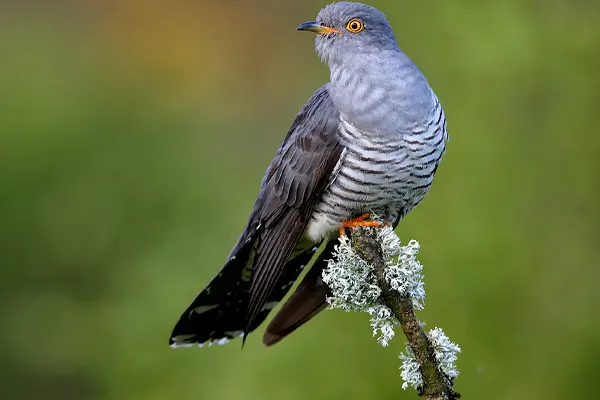
- Bird Ringing and Tracking Projects: Researchers may organize bird-ringing projects to track the movements of Common Cuckoos. These projects can involve the placement of tracking devices, and providing valuable information about their migration routes, stopover sites, and wintering grounds.
- Educational Materials: Educational institutions, nature reserves, and wildlife organizations can develop informative materials, such as brochures, guidebooks, and online resources, highlighting the biology, behavior, and ecological importance of Common Cuckoos.
- Research Collaboration: Ecotourism initiatives can collaborate with researchers and conservationists to offer tourists the opportunity to contribute to ongoing studies. This collaboration enhances the educational aspect of ecotourism and fosters a sense of conservation stewardship.
- Photography Tours: Nature photography tours focused on Common Cuckoos can attract enthusiasts interested in capturing images of these birds in their natural habitats. Professional guides can provide insights into behavior, optimal photography techniques, and ethical wildlife photography practices.
- Conservation Awareness Campaigns: Educational programs and ecotourism initiatives can include components focused on the conservation challenges faced by Common Cuckoos. Awareness campaigns can highlight the importance of protecting their habitats, addressing climate change, and understanding the interconnectedness of ecosystems.
Conclusion
The Common Cuckoo (Cuculus canorus) is a captivating bird that occupies a unique place in the avian world. Its distinctive behaviors, including brood parasitism, migratory prowess, and iconic vocalizations, contribute to its ecological significance and cultural importance.
The evolutionary arms race between Common Cuckoos and their host species reflects the intricate balance within ecosystems. As a brood parasite, the cuckoo influences the behavior and adaptations of its hosts, shaping avian communities and contributing to the overall biodiversity of habitats it inhabits.
The bird’s incredible migratory journeys, spanning continents and ecosystems, showcase the adaptability and resilience of this species. Common Cuckoos serve as indicators of environmental health, with their migrations reflecting the interconnectedness of habitats and the availability of critical resources.



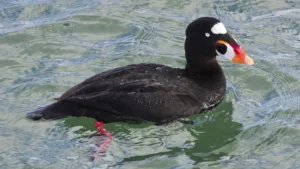

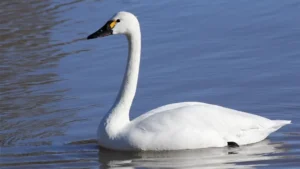
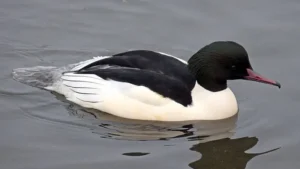
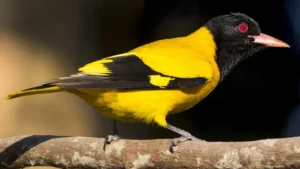

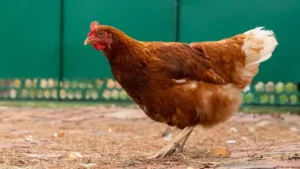
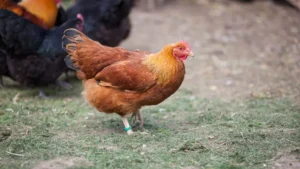
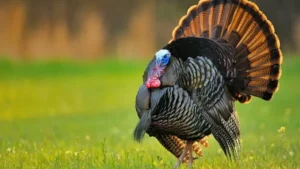
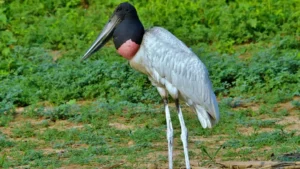
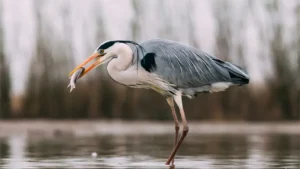
Leave your comment